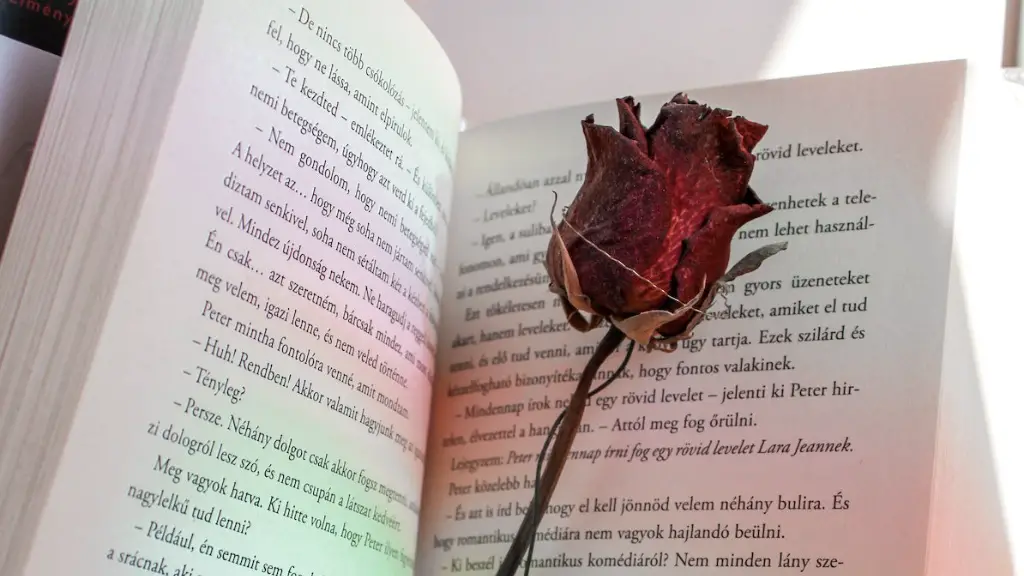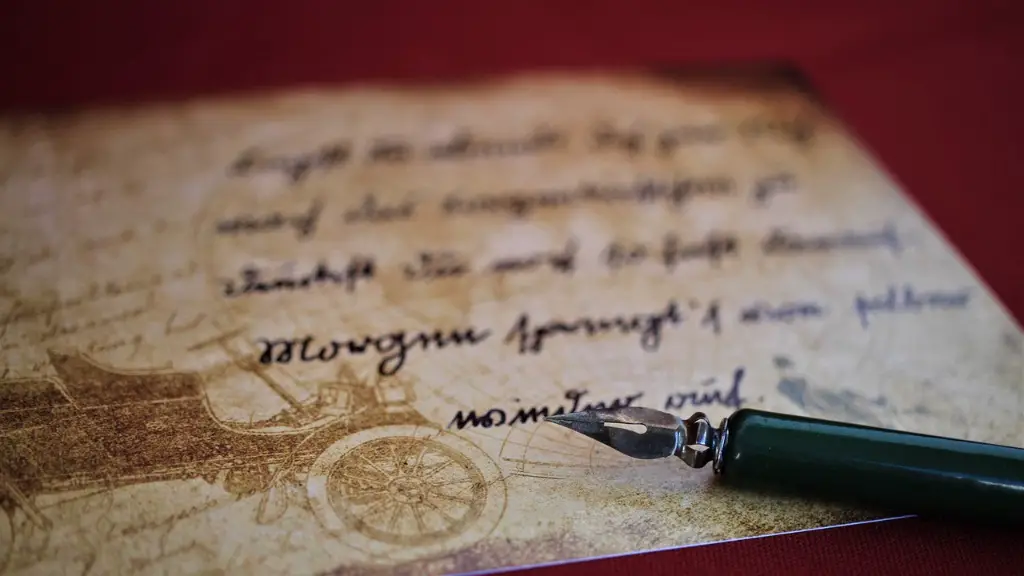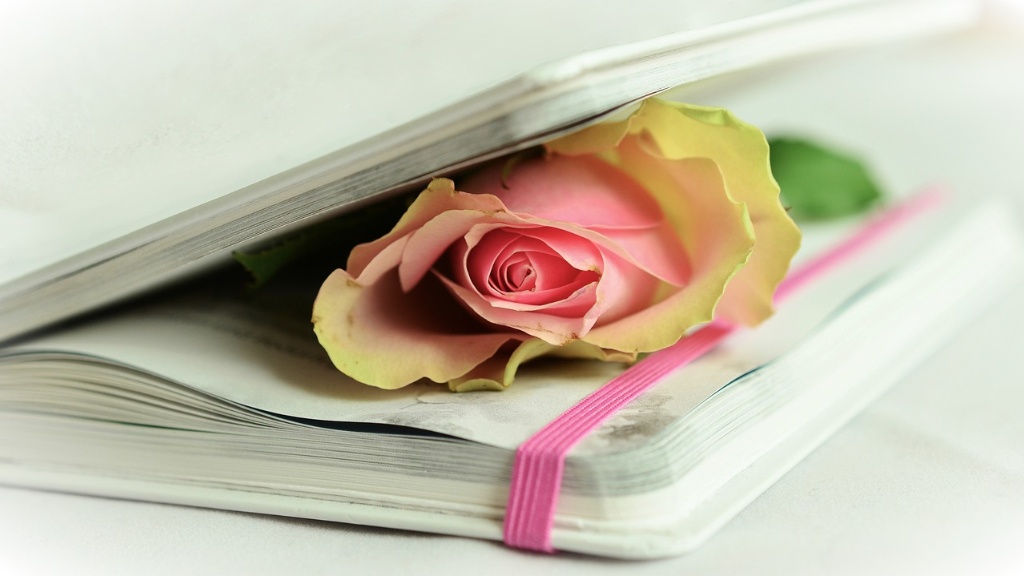The use of simile in poetry is a powerful tool for conjuring vivid images in the readers’ minds. A simile is a figure of speech that compares two things, often by employing the phrases ‘like’ or ‘as’. Similes in poetry not only add color and life to a poem, but they also convey a meaning that can sometimes go beyond the actual words that are spoken or written. By using similes, poets can also create an emotional connection with the reader which can bring a depth of feeling that is hard to achieve with just words alone.
In order to understand what a simile is in poetry, we must first understand what a simile is. A simile is a form of figurative language in which two unlike things are compared, usually using the words ‘like’ or ‘as’. It is important to note that a simile does not imply a literal comparison. Instead, it is used to create an indirect comparison between two different things, with the aim of creating a mental picture or understanding of a concept.
Similes are often used in poetry to create an emotional response or feeling within the reader. This can be done by using vivid imagery and metaphors. Similes can evoke both positive and negative emotions when used in a poem. For example, a simile could be used to describe the beauty of a sunset, or to describe the sadness of losing a loved one. Furthermore, similes can be used to convey an idea or feeling by compressing it into a single phrase, thus making the poem more efficient and powerful.
A simile is most effective when the comparison is apt, yet unexpected. For example, a poet might compare the blazing summer sun to molten gold. This unexpected comparison can not only create a vivid mental image, but it can also convey a deeper feeling or emotion that the reader can feel. Furthermore, the poet can use this simile to convey the idea that the sun is a powerful and valuable force, as gold is a precious and valuable metal.
Similes can also be used to create contrast in a poem. This can be done by contrasting similar elements, such as by comparing the sweetness of honey to the bitterness of tears. This contrast can be used to highlight the range of emotions and feelings that one can experience. Furthermore, the contrast between two elements can create a feeling of tension or contrast, which can make the poem more interesting and dynamic.
In summary, similes are a powerful tool that can be used to create vivid mental images and convey powerful emotions in a poem. They can be used to create contrast, highlight emotions and feelings, and to compress a concept into a single phrase. By using similes in a poem, the poet can evoke powerful feelings and create a dynamic poem that will engage the reader on an emotional level.
Similes and Metaphors
It is important to note the difference between a simile and a metaphor. A simile is a comparison between two different things, where the comparison is indicated by the use of the words ‘like’ or ‘as’. A metaphor is a comparison between two things, but the comparison is not indicated with words; instead, the two things are described as if they were one. For example, ‘the sky is a blanket of stars’ is a metaphor, whereas ‘the sky is like a blanket of stars’ is a simile.
It is also important to note that while similes and metaphors both create vivid images, they each have different effects on the reader. Similes tend to create a comparison between two different things, and thus tend to be more direct and explicit. Metaphors, on the other hand, offer a more abstract comparison, and thus tend to create a feeling of deeper connection to the poem.
Similes and metaphors can both be used in a poetic work to create powerful images and feelings, but each should be used in the appropriate manner. In general, a simile should be used when a direct comparison between two different things is desired, while a metaphor should be used when a more abstract comparison is desired.
Similes in Different Poetic Forms
Similes can be used in a variety of different poetic forms, including lyric, narrative, and epic poetry. In each form, similes can be used to create vivid images and evoke powerful emotions. For example, in lyric poetry, similes can be used to create a vivid description of a scene or feeling. In narrative poetry, they can be used to create a story or a story arc. And in epic poetry, they can be used to create a grand sense of scale or to bring excitement to battle scenes.
Similes can also be used to create irony or satire. By comparing two different things in a humorous way, a poet can create an ironic contrast or even poke fun at a particular idea or situation. For example, in Irish satirist Oscar Wilde’s poem ‘The Ballad of Reading Gaol’, the narrator compares the singing of birds in the prison yard to the singing of a ‘choir invisible’, creating a humorous contrast between the joy of nature and the misery of the prisoners.
In conclusion, similes are a powerful poetic tool that can be used to create vivid mental images, evoke powerful emotions, and even create irony and satire. Similes can be used in a variety of poetic forms to create a range of different effects, from the beauty of nature to the misery of prisons. By using similes appropriately, a poet can create rich and engaging poems.
Similes in Other Forms of Writing
Similes can also be used in other forms of writing, such as novels and essays. In fiction, similes can be used to create vivid descriptions of characters, settings, and scenes. They can also be used to create metaphor and comparison between the characters, the action of a story, or between the plot elements. In non-fiction writing, similes can be used to create vivid descriptions and to compare different concepts or ideas. Furthermore, similes can be used to create emphasis, while at the same time conveying a message in an efficient and direct manner.
Similes are also often used in everyday speech, either as a way to emphasize a point or to create an emotional response. For example, one might describe a situation as ‘like a drowning rat’, thereby conveying the feeling of helplessness and panic in one simple phrase. Similes can also add colour to everyday conversations, as they can create vivid mental images and sometimes even evoke humour or surprise.
In summary, similes are a powerful tool that can be used to create vivid mental images, evoke powerful emotions, and provide emphasis in a range of different forms of writing. They can be used to create metaphor and comparison, as well as to evoke humour or surprise in everyday speech. by using similes appropriately, a writer can create engaging and vibrant works of literature.
Similes in Music
Similes can also have a powerful effect on the listener when used in music. A simile in a lyrical song can create vivid imagery that the listener can relate to and thereby gain a deeper understanding of what the song is about. For example, in the song ‘The Blackest Crow’ by Joey Barge, the singer compares his loneliness and isolation to the loneliness of a solitary crow in the sky. Through this simile, the listener is able to gain a deeper understanding of the singer’s feelings and emotions.
Similes can also be used in instrumental music. By using different instruments, or combinations of instruments, to make a comparison, the composer can create a powerful effect on the listener. For example, the composer John Adams uses bassoons to create a comparison between a ‘roaring sea’ and a ‘calm lake’. Through this comparison, the listener is able to gain a better understanding of the composer’s intentions and feelings.
In conclusion, similes can be used in music to create vivid imagery and to evoke powerful emotions in the listener. By using similes appropriately, a composer can create a deeper understanding of their feelings and emotions and create powerful and emotionally engaging compositions.
Conclusion
Similes are a powerful tool that can be used in poetry, prose, music, and everyday speech. In each context, similes can create vivid mental images, evoke powerful emotions, and create metaphor and comparison. By using similes appropriately, a poet, writer, or musician can create an engaging and emotionally powerful work.




